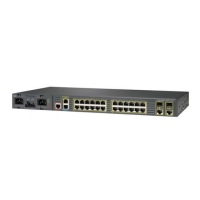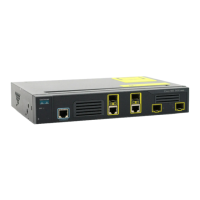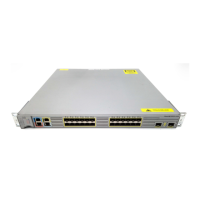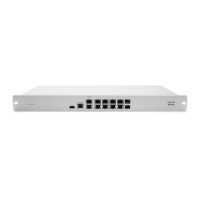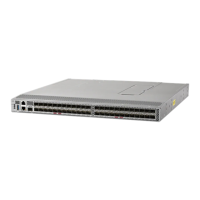33-22
Cisco ME 3400 Ethernet Access Switch Software Configuration Guide
OL-9639-07
Chapter 33 Configuring QoS
Understanding QoS
This example shows how to configure traffic shaping for outgoing traffic on a Fast Ethernet port so that
outclass1, outclass2, and outclass3 get a maximum of 50, 20, and 10 Mbps, respectively, of the available
port bandwidth. The class class-default at a minimum gets the remaining bandwidth.
Switch(config)# policy-map out-policy
Switch(config-pmap)# class classout1
Switch(config-pmap-c)# shape average 50000000
Switch(config-pmap-c)# exit
Switch(config-pmap)# class classout2
Switch(config-pmap-c)# shape average 20000000
Switch(config-pmap-c)# exit
Switch(config-pmap)# class classout3
Switch(config-pmap-c)# shape average 10000000
Switch(config-pmap-c)# exit
Switch(config-pmap)# exit
Switch(config)# interface fastethernet 0/1
Switch(config-if)# service-policy output out-policy
Switch(config-if)# exit
Port Shaping
To configure port shaping (a transmit port shaper), create a policy map that contains only a default class,
and use the shape average command to specify the maximum bandwidth for a port.
This example shows how to configure a policy map that shapes a port to 90 Mbps, allocated according
to the out-policy policy map configured in the previous example. The service-policy policy map class
command is used to create a child policy to the parent:
Switch(config)# policy-map out-policy-parent
Switch(config-pmap)# class class-default
Switch(config-pmap-c)# shape average 90000000
Switch(config-pmap-c)# service-policy out-policy
Switch(config-pmap-c)# exit
Switch(config-pmap)# exit
Switch(config)# interface fastethernet0/1
Switch(config-if)# service-policy output out-policy-parent
Switch(config-if)# exit
Parent-Child Hierarchy
The switch also supports parent policy levels and child policy levels for traffic shaping. The QoS
parent-child structure is used for specific purposes where a child policy is referenced in a parent policy
to provide additional control of a specific traffic type.
The first policy level, the parent level, is used for port shaping, and you can specific only one class of
type class-default within the policy. This is an example of a parent-level policy map:
Switch(config)# policy-map parent
Switch(config-pmap)# class class-default
Switch(config-pmap-c)# shape average 50000000
Switch(config-pmap-c)# exit
The second policy level, the child level, is used to control a specific traffic stream or class, as in this
example:
Switch(config)# policy-map child
Switch(config-pmap)# class class1
Switch(config-pmap-c)# priority
Switch(config-pmap-c)# exit
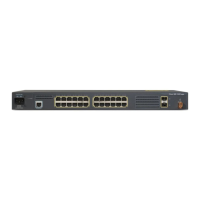
